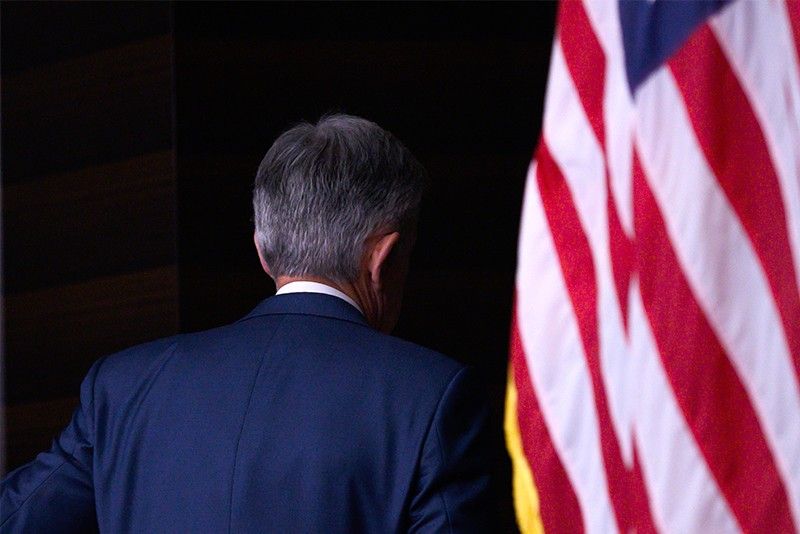US Fed cuts key interest rate to 'insure' against global uncertainties

WASHINGTON — The US Federal Reserve, under intense pressure from President Donald Trump to stimulate the economy, on Wednesday cut the benchmark interest rate for the first time in more than a decade but struggled to justify the move or explain where it goes next.
The move to ease the cost of borrowing was well telegraphed and meant to inoculate against global risks washing onto American shores, but financial markets were whipsawed by confusion over whether another cut would be coming.
Fed Chair Jerome Powell told reporters he remains confident in the US economy and sees no sectors ready to go "bust."
But he said the Fed decided on a 25-basis-point cut in the rate to "insure against downside risks from weak global growth and trade policy uncertainty, to help offset the effects these factors are having on the economy."
However, Trump -- who had been loudly calling for a rate cut -- wasted no time in attacking on Twitter, saying the move fell far short of the "aggressive rate-cutting cycle" he wanted.
The target for the federal funds rate was lowered to 2.0-2.25 percent and the central bank again vowed to "act as appropriate to sustain the expansion."
It was a quick turnaround for the Fed, coming after four rate increases last year -- the last one in December.
But Powell tried to paint it as part of a continuum, with central bankers shifting their policy stance as economic data changed over the course of the year, especially trade tensions, which nearly "boiled over" last month but have now returned "to a simmer."
Wall Street plunged after Powell said the Fed was not on the threshold of a "lengthy cutting cycle," with the Dow Jones Industrial Average at one point losing nearly 500 points.
Powell later clarified, saying that neither was he ruling out another rate cut, and the Dow pared losses to close down a little over 300 points or 1.2 percent.
"Let me be clear. I said it's not the beginning of a long series of rate cuts. I didn't say it's just one or anything like that," Powell said.
It was another example of the Fed's communication woes as it is buffeted by conflicting economic signals and constant verbal attacks.
Nor is the Fed's policy-setting Federal Open Market Committee presenting a unified front: Esther George, head of the Kansas City Federal Reserve bank, and Eric Rosengren, of Boston, dissented in the 8-2 vote, preferring to leave rates unchanged.
The Fed also gave Trump something else he has demanded in his unrelenting attacks: an early end to a policy known as "quantitative tightening" or QT.
Beginning August 1 -- two months ahead of schedule -- the Fed will stop reducing the huge amount of securities it built up during the global financial crisis.
Tuning out political pressure
Trump's aggressive trade policies, and his conflict with China in particular, have thrown a wrench into the world economy and complicated the Fed's carefully laid plans.
On Wednesday, he welcomed the end of QT but said, "As usual, Powell let us down."
"What the market wanted to hear from Jay Powell and the Federal Reserve was that this was the beginning of a lengthy and aggressive rate-cutting cycle which would keep pace with China, the European Union and other countries around the world," Trump tweeted.
"We are winning anyway but I am certainly not getting much help from the Federal Reserve!"
Powell also on Wednesday again dismissed fears that central bankers are swayed by outside pressure on the independent Fed, saying policy is "going to depend on the evolving data and the evolving risk picture."
"We never take into account political considerations. There's no place in our discussions for that," he said.
And despite speculation that the last rate increase in December was a move to defy Trump, Powell insisted, "We don't conduct monetary policy in order to prove our independence."
While the committee continues to expect sustained economic expansion and inflation gradually rising to the Fed's two percent target, "uncertainties about this outlook remain."
In fact, with unemployment at 3.7 percent, near the lowest point in 50 years, and average job creation in the first half of this year at 172,000 a month -- slower than the 223,000 in all of 2018, but still solid -- some economists see little need for the Fed to provide additional stimulus.
Economist Joel Naroff said "the data don't point to a faltering economy only a moderating one."
"Where we go from here, though, is the real question and, given the rapidity with which Whiplash Jay changes direction, I have little idea what the next move will be," Naroff said in a research note.
- Latest
- Trending

























